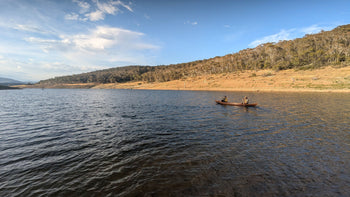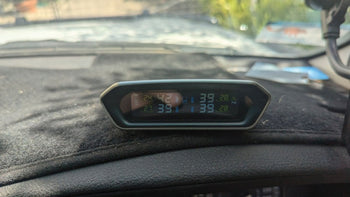

Starlink has been the word on everyone’s lips since it was launched in 2021, but what is it? And how will it make your travels easier? Keep reading to find out.
Big Lappers, digital nomads, even ‘weekend warriors’ will be aware of what a Starlink is … and like them, we’re big fans here at A247 Gear.
Whether you need access to office or school systems, video conferencing or just want to peruse Instagram while deep in the Aussie outback, Starlink can make all of that possible — no matter how remote or into the blue yonder you find yourself.
So … what’s a Starlink?

Starlink — an internet offshoot of SpaceX, the rocket company started by Tesla entrepreneur Elon Musk — has been the word on everyone’s lips since it was launched worldwide in 2021.
It’s a very simple system to provide users with a satellite-based, high-speed internet connection. You purchase the hardware kit (usually $599) which includes everything you need to connect to the internet — the Starlink satellite dish, wifi router, power supply, cables and base.
The dish comes with a base which you can sit on the ground, on top of your vehicle, on a table or wherever — but it does need a clear, unobstructed view of the sky. If you are camped in a treed area, this can be problematic, and it will affect Starlink’s performance. However, the cable is 15m long so you can move the dish to the most suitable location. If you have your dish sitting on the ground, you’ll have to be aware of nearby vehicles and, depending on where you’re camping, you might want to bring it inside while you’re away from camp for security reasons.
In terms of power consumption, the router does need 240V power which is a consideration for those who like to get off-grid and free camp. It doesn’t draw much power though — about 50W — so even a small inverter will be enough to keep it going from your batteries.
Connecting to the network involves downloading the Starlink app (Android users can download here or iOS here) which allows you to customise settings, receive updates, access support and see real-time performance data such as download speed, latency and uptime. It will also tell you how many devices are connected and whether there are any obstructions, among other things.
So, arrive at camp, set it up (it really only takes a few minutes) and you have immediate high-speed internet access on an as-needed basis at any destination where Starlink provides active coverage. And that coverage is pretty wide, even in the most remote areas of the country. Does that include the Simpson Desert? I hear you ask … and the answer is, indeed, it does.
The power of Starlink: A new era in remote communications
As of September 2024, there are 6426 Starlink satellites in low earth orbit (around 550km from Earth) which communicate with designated ground receivers. Apparently, that’s more than 60 times closer than the distance of the NBN’s satellites. It means data has a shorter distance to travel which means quicker download speeds, so online services such as video conferencing should in theory feel less laggy … and it’s true — I’ve (Allison) experienced sharper Teams calls from outback Queensland than suburban Melbourne on the NBN.
With Starlink users growing from 1.5 million in May 2023 to the 4 million today (October 2024), SpaceX is certainly gearing up for more expansion plans in the future.

Various packages to suit your needs
Starlink offers various plans but for travellers the roam or portable option at $195 per month (unlimited gigabytes) on top of the hardware is a great option. Plans can be paused when not in use with billing in monthly increments.
For those who like to have the internet while they are travelling, the in-motion package is designed for a permanent installation on your vehicle and is resilient in harsh environments. With a wide field of view and enhanced GPS capabilities, the Flat High Performance Starlink can connect to more satellites, allowing for consistent satellite connectivity on the go.
The mobile-on-vehicle hardware costs start at $374 per month with a one-time hardware fee of $3740. Installation on your vehicle is an additional cost. There are also Starlink packages for business and residential purposes.
The wrap
Anyone who has been touring recently will attest to the increasing popularity of Starlink. Pull into any caravan park or camping ground and you will see a handful, if not more, of dishes pointed to the southern sky. On a recent Cape York trip, the campground at Moreton Telegraph Station was using Starlink to provide internet to campers at $5 for 24 hours.
At the Mundi Mundi Bash music festival held just out of Silverton (near Broken Hill), a couple of Starlink dishes were set up for paid wifi for festivalgoers; there were a couple outside the media tent for the journos and some vendors had them for EFTPOS transactions.
Starlink is a game changer for digital nomads and those just wanting to stay connected to the outside world, and in 2024 the innovative technology continues to push boundaries in remote and satellite communications.
More information can be found at starlink.com.



